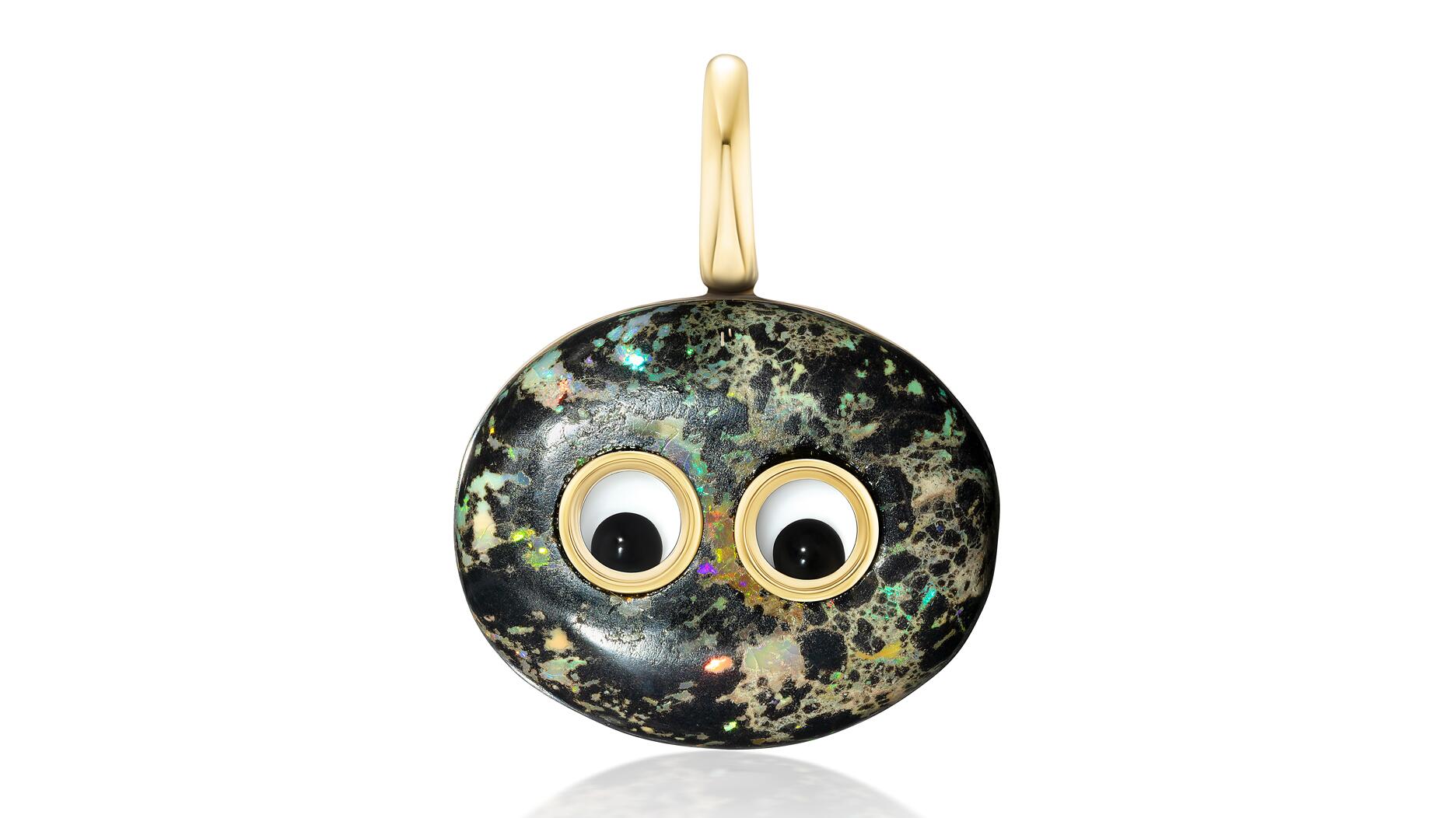The couple pleaded guilty to concealing at least $127 million in cash transactions at its precious metals businesses.
The Nirav Modi Case: What Else We Learned This Week
An affidavit filed Thursday maps out the connection between the Indian diamantaire and his U.S. companies that filed for bankruptcy.

A lot of questions came to mind Tuesday as I was working on the story about the bankruptcy filing of the three U.S. companies—Firestar Diamond Inc., Fantasy Inc. and A. Jaffe—ultimately owned by Nirav Modi, the Indian diamantaire at the center of a $1.8 billion bank fraud scandal.
How are they all connected to Modi? Is it accurate to say that he owns them?
Why a Chapter 11 filing in a case like this, beyond the obvious?
And what will happen to these three companies going forward?
Late Thursday afternoon, an affidavit was filed that helped to answer at least some of my questions.
The Modi Connection
Press reports about the Chapter 11 filings mainly used the word “owned” to link Modi and these U.S. operations, which isn’t inaccurate. But his ownership of the company is neither direct nor simple.
Ian Winters, the New York attorney handling the companies’ Chapter 11 case, said Tuesday that Modi was not an officer or a director in any of the three U.S. companies and was not involved in their day-to-day operation.
A. Jaffe, too, was quick to point out that its team here had no knowledge of what was happening in India. The second sentence of its statement on the bankruptcy filing read: “A. Jaffe and its core team here in the United States want to assure partners and customers that A. Jaffe is not in any way involved with any of the alleged conduct that is the subject of the accusations.”
According to the affidavit, Firestar Diamond Inc. was formed as a Delaware corporation in February 2004 as Jewelry Solutions International Inc. The name of the company changed three times over the next seven years, to Next Diamond Inc. (2005), Firestone Inc. (2007) and, finally in 2011, to the name it has now, Firestar Diamond Inc.
Fantasy Inc. was incorporated in Delaware in 2012 and is a wholly owned subsidiary of Firestar Diamond Inc.
A. Jaffe Inc., which traces its roots back to 1892, incorporated in New York in July 1975 under the name Sandberg & Sikorski Diamond Corp. In 1995, the company dropped the “Diamond” from its name before changing it again in 2011 to A. Jaffe Inc.
Firestar Diamond Inc. is a wholly owned subsidiary of Firestar Group Inc., a Delaware corporation. Firestar Group is owned by another Delaware corporation, Synergies Corp.
Synergies is a wholly owned subsidiary of a Hong
A. Jaffe Inc., meanwhile, is 95 percent owned by Synergies, with founder Sam Sandberg holding the remaining 5 percent.
Do you need an Advil now? If so, feel free to grab a couple. I’ll wait.
Now, remember that conversation I reported on last week with the banker, in which he talked about how bankers are put off by the industry’s lack of transparency? This “spaghetti junction” of organization, as another industry insider described it, is exactly what he was talking about.
Why Chapter 11?
There’s a section of the affidavit titled “Events Leading to the Chapter 11 filing” that, after running down the allegations against Modi, points to the same factor that Winters mentioned to me on the phone Tuesday when I was interviewing him about the bankruptcy filing.
Modi’s factories in India that made most of the jewelry for Firestar Diamond, Fantasy Inc. and A. Jaffe were seized and shut down, which, the affidavit points out, resulted in thousands of people losing their jobs. The Indian entities also provided Firestar/Fantasy and A. Jaffe with back office and support functions.
That’s a sad reality of situations like this—that everyday working people lose their livelihoods because of the ego and greed (or, in this case still, alleged greed) of big corporations or individuals—and it shouldn’t be forgotten.
It’s also worth noting that job losses are what the principals of Firestar/Fantasy and A. Jaffe are trying to prevent from happening in the United States.
Chapter 11 gives these three companies a chance to reorganize either with new owners or investors, provided they can find some who are willing and also can navigate the legalities of selling companies that are connected to an alleged, international white-collar crime.
Firestar Diamond International and Fantasy Inc. do about $90 million in sales a year, according to the affidavit, selling to big companies like Signet-owned Zales, Kay Jewelers, and Jared the Galleria of Jewelry, as well as Costco, Sam’s Club, Walmart and J.C. Penney. The company also holds the IP for the Endless Diamond brand.
A. Jaffe’s market is more upscale—it sells to “hundreds of the finest independent jewelry stores in America,” the affidavit states—and the company has been growing steadily over the past three years, with fiscal 2018 sales projected to reach $23 million.
Both businesses are looking for a buyer, and the affidavit told me the same thing that Winters did on the phone earlier this week: that “early expressions of interests” have been “strong.”
What About the Nirav Modi Stores?
This is not something that was included in the affidavit and is not connected to any of the three companies above, but I do want to talk a little bit about what we know about Modi’s stores in the U.S.
As I noted in my blog post last week, Modi has (or seemingly had) three eponymous stores here.
The first was on Madison Avenue in New York, with stores in the Wynn Las Vegas and the Ala Moana Center outdoor mall in Honolulu opening this past November.
On Thursday, the only phone number I could find online was for the New York store. When I called it, I got an automated message from Time Warner.
The Hawaii store is still listed on the Ala Moana website, but when I called during business hours Thursday, neither a machine nor a human answered.
At the Wynn Las Vegas, I didn’t see Nirav Modi listed among the shops on the hotel’s website. I reached out to the hotel’s public relations department Thursday but didn’t hear back, though it is fair to note that they might have their hands full relating to the public on other matters.
The Latest

Consumers shared concerns about prices, inflation, tariffs, trade, and politics in the survey’s write-in response section.

In February 2026, the auction house will move its headquarters to the former Steinway Hall, a neoclassical landmark on Billionaires’ Row.

How Jewelers of America’s 20 Under 40 are leading to ensure a brighter future for the jewelry industry.

The new show will take place Jan. 23-25, 2026.


The former BHP Billiton leader and Gemfields chairman is remembered for his influential leadership throughout his 50-year mining career.

The LVMH-owned brand has partnered with the costume design union to revamp its award for 2026.

Roseco’s 704-page catalog showcases new lab-grown diamonds, findings, tools & more—available in print or interactive digital editions.

The luxury titan inked a deal to acquire an initial minority stake in the jewelry manufacturer with a pathway to full ownership by 2032.

The company’s curation of unsigned vintage and estate jewelry debuted at the Bloomingdale’s in Costa Mesa, California.

In the recent multi-shipment seizure, CBP also found counterfeit Audemars Piguet, Moncler, and Chrome Hearts items.

Jewelers of America execs and National Jeweler editors discuss tariffs, the sky-high gold price, and the engagement that broke the internet.

The luxury goods company said founder Ippolita Rostagno will remain at the brand’s helm.

Laura Burdese, who joined the Italian luxury brand in 2022, will take on the role in July.

Need a gift for the cat lover who has everything? Look no further than our latest Piece of the Week.

It purchased the “Grosse Pièce,” an ultra-complicated Audemars Piguet pocket watch from the ‘20s, for a record-breaking price at Sotheby’s.

The lab-grown diamond grower now offers custom engagement and fashion jewelry through its Kira Custom Lab Jewelry service.

Chandler got his start at Michelson Jewelers and has served as DCA president and CEO since 2001. He will retire at the end of the month.

The boutique is slated to open this week inside Terminal 8, offering pre-owned Rolex watches and more to international travelers.

Sponsored by Digital Monitoring Products

The special-edition egg pendant ingested in a New Zealand jewelry store was recovered after a six-day wait.

Associate Editor Natalie Francisco plays favorites with Piece of the Week, selecting a standout piece of jewelry from each month of 2025.

The “Love and Desire” campaign is inspired by the magic that follows when one’s heart leads the way, said the brand.

Two awardees will receive free tuition for an educational course at the Swiss lab, with flights and lodging included.

Berta de Pablos-Barbier will replace Alexander Lacik at the start of January, two months earlier than expected.

Sotheby’s held its first two jewelry sales at the Breuer building last week, and they totaled nearly $44 million.

Winners will receive free registration and lodging for its fourth annual event in Detroit.


























